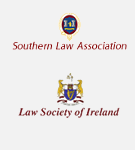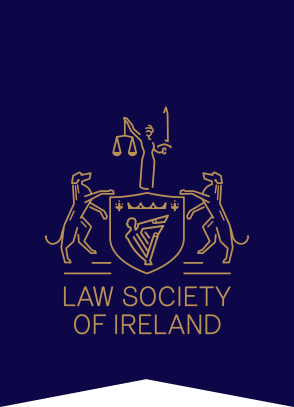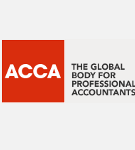Borrowers in Arrears and the Code of Conduct of Mortgage Arrears (“the Code”)
In this article I will focus on the Code of Conduct of Mortgage Arrears governing banks in their dealings with borrowers who have difficulty in making payments. I will set out what the Code is and who it applies to. I will give the facts of the High Court case of Stepstone Mortgage Funding Limited v Fitzell [2012] IEHC 142 where Mrs. Justice Mary Laffoy illustrated the importance of the Code. Finally I will highlight the main areas that are being considered in the review of the Code by the Central Bank.
What is the Code?
This Code is designed to ensure that borrowers are protected and are treated fairly and in a transparent manner. It contains rules for lenders when dealing with borrowers who are in arrears with their mortgage repayments. It only applies to the mortgage loan of a borrower which is secured by their primary residence ie. buy-to-let mortgages and holiday homes do not come under it’s scope. The latter are dealt with by the Central Bank’s Consumer Protection Code 2012.
A Recent Case dealing with the Code
The importance of the Code was illustrated in the recent Irish High Court case of Stepstone Mortgage Funding Limited v Fitzell [2012] IEHC 142. In that case a sum of money was borrowed and used to purchase a primary residence. The borrower later fell into arrears and the Bank sought to repossess the house. The question the judge had to decide was whether the borrower had a right to appeal the Bank’s application to repossess. In deciding the case the judge had to decide whether the Code applied. In this case the borrower had completed a number of Standard Financial Statements (SFSs) at the Bank’s request. (SFSs are documents used by a lender when obtaining financial information from a borrower in arrears to decide whether or not to offer an alternative repayment arrangement).
Subsequently the Bank detailed in a letter to the borrower that they were unable to offer a further repayment arrangement and so the Bank advised that they would proceed with their court application to repossess. The Bank told the borrower that the Code did not apply in this case as court proceedings had commenced prior to the Code coming into effect as such the borrower had no right of appeal. The High Court judge disagreed and said that the Code did apply and that the borrower had a right to appeal under the Mortgage Arrears Resolution Process (“MARP”) contained in the Code. The High Court judge went on to hold that the Bank was not entitled to repossess the house.
What is the MARP? The purpose of the MARP is to set out clear guidelines for borrowers and lenders in relation to dealing with mortgage holders who are in difficulty. The MARP is made up of 5 steps:
- Communication
- Financial Information
- Assessment
- Resolution
- Appeals
Review of the Code
The Central Bank last month issued a consultation paper seeking views on the Banks’ proposals to amend a number of areas in the Code. I have highlighted the following four areas as worth considering:
- Are you co-operating with your lender?
If you are in mortgage arrears it is vital that you co-operate with your lender. Both borrowers who co-operate and those who do not are treated very differently under the Code. For example a lender that legitimately classifies a borrower as “not co-operating” may commence legal action for repossession immediately whereas co-operating borrowers must be given a 12 month moratorium. It is being proposed to clarify the distinction between co-operating and not co-operating borrower.
- How often can your lender contact you?
Contact rules can be very important for borrowers in arrears. It is being proposed to remove the current regime whereby a lender may have no more than three successful unsolicited communications per month with a borrower in arrears. Unsolicited communication is defined in the proposed revised Code as “any communication that has not been requested by, or agreed in advance with, the borrower and includes but is not limited to a letter, telephone conversation, and voicemails. It does not include communications where the borrower does not answer the call or communications where the number is engaged when the lender seeks to contact the borrower.” Contact is to be proportionate and not excessive and lenders must draw up a contacts policy. Contact is to be proportionate and not excessive and lenders must draw up a contacts policy.
- Bank transparency
With transparency in mind it is proposed that banks will provide more information on options such as voluntary surrender, trading down, mortgage to rent, voluntary sale and the implications of these for the borrower. It is proposed that a lender must outline the implications of these options for the borrower and his or her mortgage loan account including: related costs, amount of outstanding arrears and the impact on the borrower’s credit rating. This information would be very welcome for borrowers.
- Tracker Mortgages
At present a lender cannot change a borrower from an existing tracker rate to another rate as part of any alternative repayment arrangement offered. In the Consultation Paper it states that “the Central Bank is now considering whether there is merit in allowing a lender to move a borrower in arrears off a tracker rate, where the lender has offered a loan modification which is advantageous to the borrower in the long term e.g., a debt write off”.
Conclusion
In it’s Consultation Paper the Central Bank states that the proposals “are intended to provide an integrated and cohesive package of consumer protection measures for borrowers facing, or in, mortgage arrears…” One can only wait and see the fruits of the consultation process in the review of the Code of Conduct on Mortgage Arrears which is promised by the end of May 2013.
Niall Colgan is a Solicitor with over 10 years experience based in Cork city.










